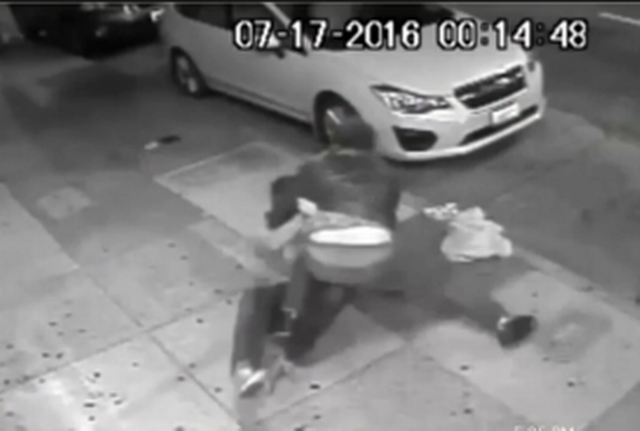Your first target choice is the most important
Your first attack either creates an opening for your second and third attacks or notifies your attacker that you need to be immediately neutralized. Once he knows you plan to fight, your element of surprise evaporates along with any time to strategize. Depending on his level of determination your assailant will do whatever is necessary to make sure his plan goes smoothly including, but not limited to, knock you out, tie you up, lock you up or kill you. Put yourself in his shoes. You’ve invested time and effort into this project, if you’re injured in the process or too much attention is drawn, you lose. If your assailant is fully invested in you, he may put everything he has into the completion of this venture. Wouldn’t you.
Sometimes your first choice is the most important one. Sometimes it is the only one.
(Caveat: Almost everything changes if your assailant has a gun and intends to use it. You will need to know how to read signals and to trust your knowledge and instincts. Does he appear to know how to use the gun? Is he desperate enough to shoot you? Might he shoot you be accident because of his level of anxiety? You will have to choose whether to give him what he wants, attack him, or run. More on this in other installments, or check www.ConflictResearchGroupIntl.com, www.NoNonsenseSelfDefense.com and www.CorneredCat.com for detailed gun-related articles.)
If you create an opening with your first attack, you will have taken an important step towards the overall strategy of bombarding him so he can’t recover. This is how you damage either him or his plan and create an opening in time and distance large enough for your escape.
The first attack is where a mental shift must occur if it has not already. How you accomplish this daunting mental shift has been covered in earlier installments of this article and, if you remember, involves trusting your own decisions and perceptions, giving yourself permission to do whatever it takes to survive, even if it goes against everything you have been told about damaging another person. The ability to shift from what is essentially a social mindset to an asocial one is a psychological mystery of sorts. Some people do it easily and others can’t do it at all. Knowing where you fall is also an important part of this puzzle.
There is only so long you can defend against a determined attacker. The law says you may not aggress on someone unless you are in imminent danger. Once you have established that you are indeed in imminent danger, you must cease to be the rabbit in the trap and become the wolf feeding her cubs. This is to say you must become the attacker. In becoming the dangerous one in the relationship for this crucial moment, you remove some of his options (remember that the predator has more options than the prey). You want him defending, not attacking. The conversation must become a monologue in which he never has a chance to speak.
Subsequent attacks will also need to be fast and furious so he has no time to breathe, but they don’t have to be quite as perfectly chosen. Ultimately, you want to use everything you have together in a merciless barrage of targeted and brutal assaults that give him no chance to recover. This is how you survive a dangerous encounter with a violent criminal. Incapacitate him and leave. You have a wild animal inside you. We are educating that animal so she can be both wild and wise.
